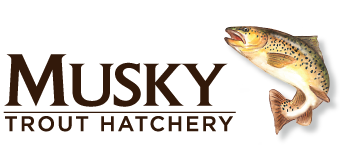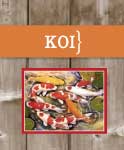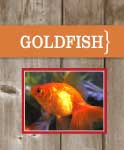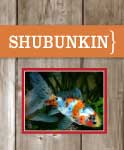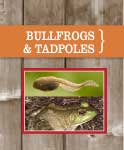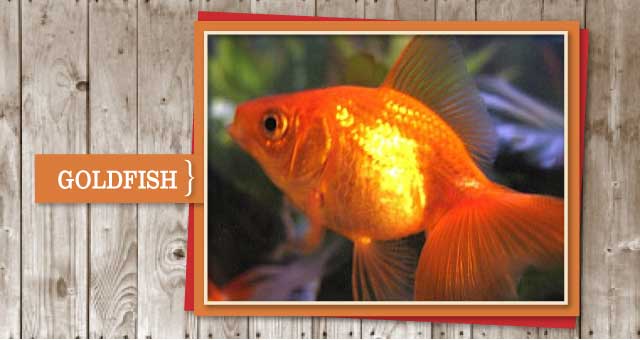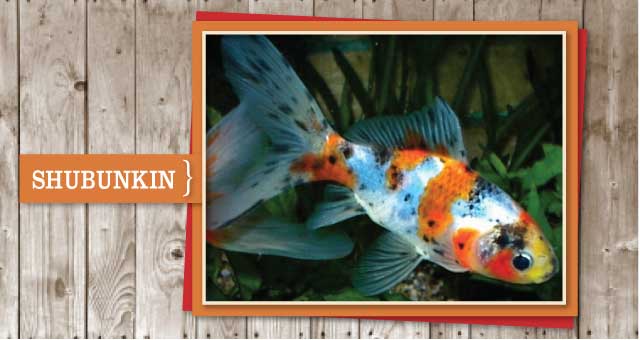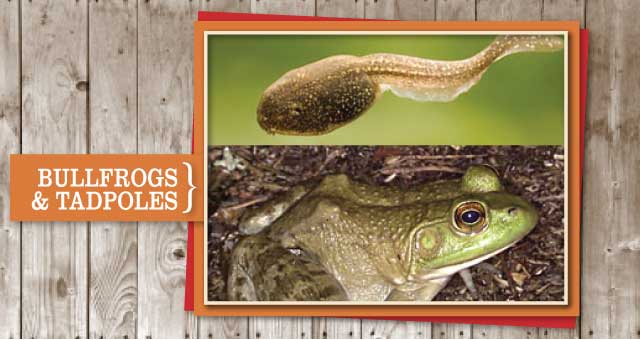Koi

Koi are ornamental domesticated varieties of the common carp that originated from China and widely spread in Japan. They are very closely related to goldfish and, in fact, the style of breeding and ornamentation has become very similar, probably through the efforts of Japanese breeders to emulate goldfish. Koi and tattoos of koi are traditionally considered lucky.
The word "koi" comes from Japanese. The original Japanese word koi simply means "carp," including both the dull grey fish and the brightly colored varieties. A homonym of koi means 'love, affection' and koi are therefore symbols of love and friendship in Japan: a good example is the short story Koi-san by Mukoda Kuniko.
Koi varieties are distinguished by coloration, patterning, and scalation. Ghost koi, developed in the 1980s are metallic hybrids of wild carp and Ogon koi and are not considered true Nishikigoi. Butterfly Koi, Longfin koi, or Dragon Carp were also developed in the 1980s and are notable for their long and flowing fins. They are actually hybrids with Asian Carp and, like Ghost koi, are not considered true Nishikigoi.
Koi have many different colors. Some of the major colors are white, black, red, yellow, blue, and cream.
While possible variations are limitless, breeders have identified and named a number of specific categories. The most popular category is Gosanke. The Gosanke category is made up of the Kohaku, Taisho Sanshoku, and Showa Sanshoku varieties. The Japanese breeders have many generations of knowledge and experience when it comes to breeding and raising Nishikigoi. They know which ones will be worth a couple hundred dollars and which ones will be a couple hundred thousand dollars.
The major named varieties include:
Kohaku - a white-skinned Koi, with a red pattern
Taisho Sanshoku (Sanke) - a white-skinned Koi with a red and black pattern
Showa Sanshoku (Showa) - a black-skinned Koi with a red and white pattern
Tancho - Any koi with the only red being in a circle on its forehead. The fish can be a Tancho Showa, Tancho Sanke, or even Tancho Goshiki.
Asagi - a Koi with light blue scales on its top and red scales on its bottom
Shusui - the partially scaled version of an Asagi
Bekko - a white, red, or yellow-skinned Koi with a black pattern
Utsurimono - a black Koi with a red, white, or yellow pattern
Goshiki - a mostly black Koi with red, white, brown, and blue accents
Ogon - a Koi that is one solid color, can be regular or metallic; known colors - red, orange, platinum, yellow and cream
KinGinRin - Koi with shiny scales "Gold Silver Scales" There is also Gin rin versions of almost any other type of koi. For example, You could have a showa with glittery scales.
Kawarimono (kawarigoi) - Miscellaneous types of Koi
Doitsu-goi - German Carp
Koromo - Koi with areas of blue-edged scales (align neatly)
Hikari-Moyomono - Koi with coloured patterns over a metallic base, and koi in two metallic colours
Ghost koi - "Hybrid" of Ogon and wild carp. Not Nishikigoi.
Butterfly Koi - Long-finned version of all others. Not Nishikigoi.
Keeping koi:
The common carp is a hardy fish, and koi retain that durability. They can be kept in anything from small containers to large outdoor ponds or water gardens. The traditional indoor aquarium is less desirable than a round plastic tub. Koi are cold water fish, so it's advisable to have a meter or more of depth in areas of the world that become warm during the summer. In areas that get harsh winters, it is a good idea to have a pond that is a minimum of 4.5 feet deep so that it won't freeze solid. It is also a good idea to keep a space open with a bubbler and a horse trough heater.
Koi's bright colors put them at a severe disadvantage against predators; a white-skinned Kohaku is a visual dinner bell against the dark green of a pond. Herons, Kingfishers, Racoons, Cats, Foxes, and Badgers are all capable of emptying a pond of its fish. A well-designed outdoor pond will have areas too deep for herons to stand in, overhangs high enough above the water that mammals can't reach in, and shade trees overhead to block the view of aerial passersby. It may prove necessary to string nets or wires above the surface. The pond should include a pump and filtration system to keep the water clear.
Koi are bottom-feeders, so koi food is not only nutritionally balanced, but designed to float so as to encourage them to come to the surface. When they are eating, you can also check for parasites and ulcers. Koi will recognize the person feeding them and gather around at dinnertime. They can even be trained to take the food from one's hand.
In the winter their digestive system slows nearly to a halt, and they eat very little, perhaps no more than nibbles of algae from the bottom. Their appetite won't come back until the water warms up in the spring. When the temperature drops below 50 °F, feeding, particularly with protein, should be halted or the food can go rancid in their stomach causing sickness.
If kept properly, koi can live about 30–40 years. Some have reportedly lived up to 200 years.
Breeding Koi:
Like most fish, koi reproduce through spawning in which a female lays a vast number of eggs and one or more males fertilize them. Nurturing the resulting offspring (referred to as fry) is a tricky and tedious job, usually done only by professionals. Although a koi breeder may carefully select the parents they wish based on their desired characteristics, the resulting fry will nonetheless exhibit a wide range of color and quality.
Unlike a purebred dog or cat, even the finest champion-grade koi will produce literally thousands of unacceptable, unrecognizable, or even genetically defective offspring in a single spawning. These (and hundreds of marginal offspring) are culled at various stages based on the breeder's expert eye and closely guarded techniques known to a rare few outside Japan.
Culled fry are usually destroyed (perhaps fed to other fish) and older culls are often sold as lower-grade "pond-quality" koi within their first year (also called "Tosai") at 3"–6" long. The semi-randomized result of the koi's reproductive process is both a blessing and a curse. While it requires diligent oversight to narrow down the favorable result that the breeder wanted all along, it also made possible the gradual transformation of wild river carp into the exquisite art form that we see in modern nishikigoi.
In the wild
Koi have been accidentally or deliberately released into the wild in every continent except Antartica. They greatly increase the turbidity of the water because they are constantly stirring up the substrate. This makes waterways unattractive, reduces the abundance of aquatic plants, and can render the water unsuitable for swimming or drinking even by livestock. In some countries, koi have caused so much damage to waterways that vast amounts of money and effort have been spent trying to eradicate them, largely unsuccessfully. Because of the danger to the environment koi possession is illegal in the state of Maine.
